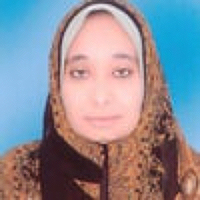The SARS CoV-2 spike domain, RGD and integrin binding effect-relationship for vaccine design strategy
Published on: 20th July, 2021
OCLC Number/Unique Identifier: 9244748101
Related the need to search new strategy in vaccine design in order to reduce also some rare effect like trombosys for some registered products it is interesting the role played by the SPIKE RGD domain.
The binding with molecules like Fibronectin is a process that must to be deeply investigated.
A better understanding in this process can be used to improve safety of the new generation of COVID vaccine.
The rare effect like thrombosis recognized by regulatory agency produced a modification of technical data sheet of some vaccine so the phenomena Is interesting to be more investigated.
Spike protein and its domains are involved in producing pathological effect of the COVID-19 disease.
What it is interesting is that some pathological effect of this pathology are similar to some rare side effect produced by some COVID-19 vaccine classes.
After a review of interesting literature related this topics is submitted an experimental projects able to verify in vitro the spike procoaugulant property.
Hypothesis about pathogenic action of Sars-COV-2
Published on: 27th March, 2020
OCLC Number/Unique Identifier: 8561623062
The Hypothesis born on a simple clinical data noted by some Chinese Reserchers during the starting point of epidemic began in the dicember of the 2019, for the novel member of human coronavirus, officially named as SARS‐CoV‐2 (severe acute respiratory syndrome coronavirus 2) by International Committee on Taxonomy of Viruses (ICTV) is a new strain of RNA viruses that has not been previously identified in humans [1]. Sars-COV and SARS CoV-2 have some clinical differences. First: The Sars, severe acute respiratory sindrome induce a respiratory disease in immunocompetent hosts, although can cause severe infections in infant, young children and elderly individuals; Sars-CoV-2 induce a middle infection into the young children but the mortality is more high in to the adult population. We made a macthing with balst p of these sequences, Sars COV-2, taken on GENEBANK with H1N1 neuraminidase and the not structural protein NS1 and NS2 an interferon antagonist that may also stimulate proinflammatory cytokines in infected cells We can speculate that the mutation is occurred on accessories protein making a different virulence action between the two species Sars Cov and Sars Cov-2, same action we have founded in the H1N1 viral pandemic of the 2019.
A Comprehensive review on genomic diversity and epidemiology of COVID-19
Published on: 22nd July, 2020
OCLC Number/Unique Identifier: 8639906558
A respiratory outbreak of COVID-19 started from Wuhan, China and on 30 January 2020, WHO declared this infection to be epidemic, implementing public health emergency worldwide. On 11th March 2020, observing its prevalence in the whole world and WHO declared as a pandemic. Many countries completely collapse in the grip of this pandemic, as there are no effective treatments available, the precaution is the sole remedy to minimize this infection. The emergence and pandemic of SARS-CoV-2 (since the SARS-CoV in 2002 and MERS-CoV in 2012] manifest the third time outline of highly contagious and pathogenic infection with infect-ability to spread globally in the twentieth-first century. The SARS CoV-2 genome is highly identical to bat coronavirus which is considered to be the perfect natural host. This coronavirus even utilizes the same ACE2 receptor as SARS-CoV and mainly spread the infection to the respiratory tract, which evidently showed that transmission of this virus through interactions and exposures. The death toll of these infected patients is increasing day by day especially when they have prehistory fatal diseases like cardiovascular, diabetics, and respiratory diseases. In this review, we summarized and explained the research progressed and available data on epidemiology, COVID-19 phylogenetic relation and its impact of different fatal disease and their relation and discuss the precautionary methods to combat this pandemic. Moreover, the pieces of evidence of spreading the virus through pets and prevention of being spreading by copper metal endorsement.
Clinical profile, etiology, outcome and new-onset diabetes: A SARI case series
Published on: 28th June, 2022
Introduction: The world is currently facing the SARS-CoV-2 pandemic with evolving 2nd wave. The COVID-19 patients present most commonly with Severe Acute Respiratory Illness (SARI) in an emergency room with acute onset fever, cough, and breathlessness. However, not all SARI cases as per definition are due to COVID-19 infection, which is well proven in this case series of 113 cases of SARI. This is just the opposite of the other SARI series done in the pre-COVID-19 era. Also, no previous SARI case series data has shown significant association with Diabetes Mellitus, including new-onset diabetes thus figuring out the major Pathophysiological association of COVID-19 with glucose metabolism and has a bearing on the pathogenesis, treatment, and outcome of COVID-19 infection and perpetuity of pandemic of this magnitude. Here we raise concern for the first time about the growing association of an infectious pandemic with the lifestyle disorders which are non-communicable diseases but carry with them the potential of fertile soil for rapidly spreading epidemics.Aim and objective: To find out the etiology, clinical profile, treatment outcome, and mortality rate in different sub-groups of SARI cases in a tertiary care hospital and the incidence of new-onset Diabetes Mellitus in them and to investigate theoretically the hypothesis that maintaining normal glucose metabolism could prevent progression of a mild Flu-like illness (FLI) to a severe form of Severe Acute Respiratory Illness (SARI) and consequent complications such as Cytokine Storm Syndrome and Multi-Organ failure.Design: Retrospective, single-center case series of 113 SARI patients at a tertiary care hospital in Agra India between 1 March- 30 October 2020.Main outcome: The demographics, clinical, pathological, imaging, and treatment outcome data were collected. The SARI cases analyzed were defined as “Severe acute respiratory infections (SARIs) an acute respiratory illness of recent onset (within seven days) manifested by fever (≥38°C), cough and shortness of breath or difficulty in breathing requiring hospitalization and were sub-classified according to the primary etiology producing SARI in them. The findings were compiled and compared. Conclusion: Of the 113 patients of SARI – 32.7 %were associated with Diabetes, with 9.74% new-onset Diabetes and 26 % previously known Diabetes. This was mainly due to SARS-CoV-2 (24 Diabetics out of 52 COVID-19 cases- 46.1 %).The Average hospitalization stay of SARI cases was 10 days with a maximum in SARS-CoV-2 and a minimum stay of 5.22 days in Bacterial Pneumonia and 5.66 days in Koch’s Lungs.The death rate was maximum (4 out of 26) 15.3%. Hospitalized TB/Koch’s Lung patients who presented as SARI and 3.8% in Bacterial Pneumonia, 2.43% in SARS-CoV-2, and <1% in Sepsis.Those SARI cases who were euglycemic at the time of initial presentation recovered early and carried a good prognosis with less mortality as compared to those who were hyperglycemic on presentation. Also, those FLI cases who maintained euglycemia or did not have any other risk factor which predisposes them to stress (Diabetes, Prolonged fasting, Obesity, major organ disorder, Psychological disorder, and Cancer) did not progress to SARI as the endogenous steroid secretion and sympathetic activation did not occur, the intracellular pH levels remained in the alkaline range.10.18% of cases developed new-onset diabetes (a total of 11 cases) out of which 10 were in COVID-19. Thus 19.2% incidence of new-onset diabetes in SARS-CoV-2 and a prevalence of 26.9% in SARS-CoV-2, making total diabetes 46.1% in SARS-CoV-2, and out of all SARI cases, 26 % of patients developed pulmonary fibrosis with consequent long-term complications. In COVID-19 patients, it was seen only in diabetics SARS CoV-2 male patients, thus no death in non-diabetic females in COVID-19 in this case series.
















